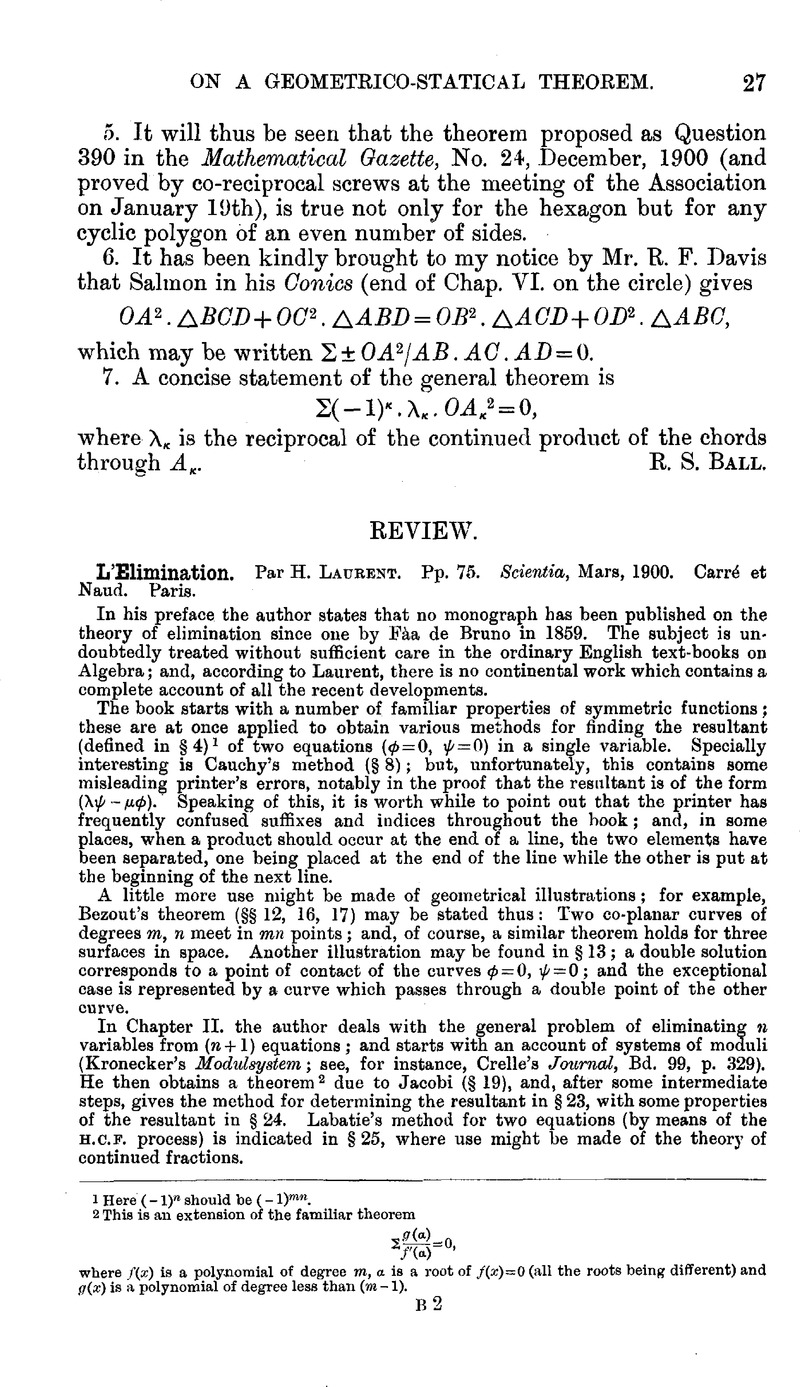No CrossRef data available.
Article contents
L’Elimination. Par H. Laurent. Pp. 75. Scientia, Mars, 1900. Carré et Naud. Paris
Published online by Cambridge University Press: 03 November 2016
Abstract

- Type
- Reviews
- Information
- Copyright
- Copyright © Mathematical Association 1901
References
page note 27 1 Here (-1)n should be (-1)mn.
page note 27 2 This is an extension of the familiar theorem
![]()
where f(x) is a polynomial of degree m, a is a root of f(x)−0 (all the roots being different) and g(x) is a polynomial of degree less than (m -1).
page note 28 1 The exact statement is Cij=cj ; presumably a printer’s error.
page note 28 2 Coll. Math. Papers, vol. ii., p. 475; Laurent himself published a paper in Liouville’s Journal (1898) where similar results are obtained.
page note 28 3 Crelle’s Journal, Bd. 26, 1843, p. 268; Salmon’s Modern Higher Algebra, Lesson vi., p. 55, 4th Ed.
page note 28 4 This reduction is always possible if the use of imaginary substitutions is admissible; but there is then no guarantee that g = 0 = x1 2+ = x2 2 +… +xn 2 really necessitates x1=0=x2 = … =xn Thus, in the case quoted below, g=0 can be satisfied by x=0, z=0 for any value of y.
page note 28 5 The proof shows that a sum of squares vanishes; and it is deduced that each vanishes separately. This is, of course, only true if all the quantities involved are real.




